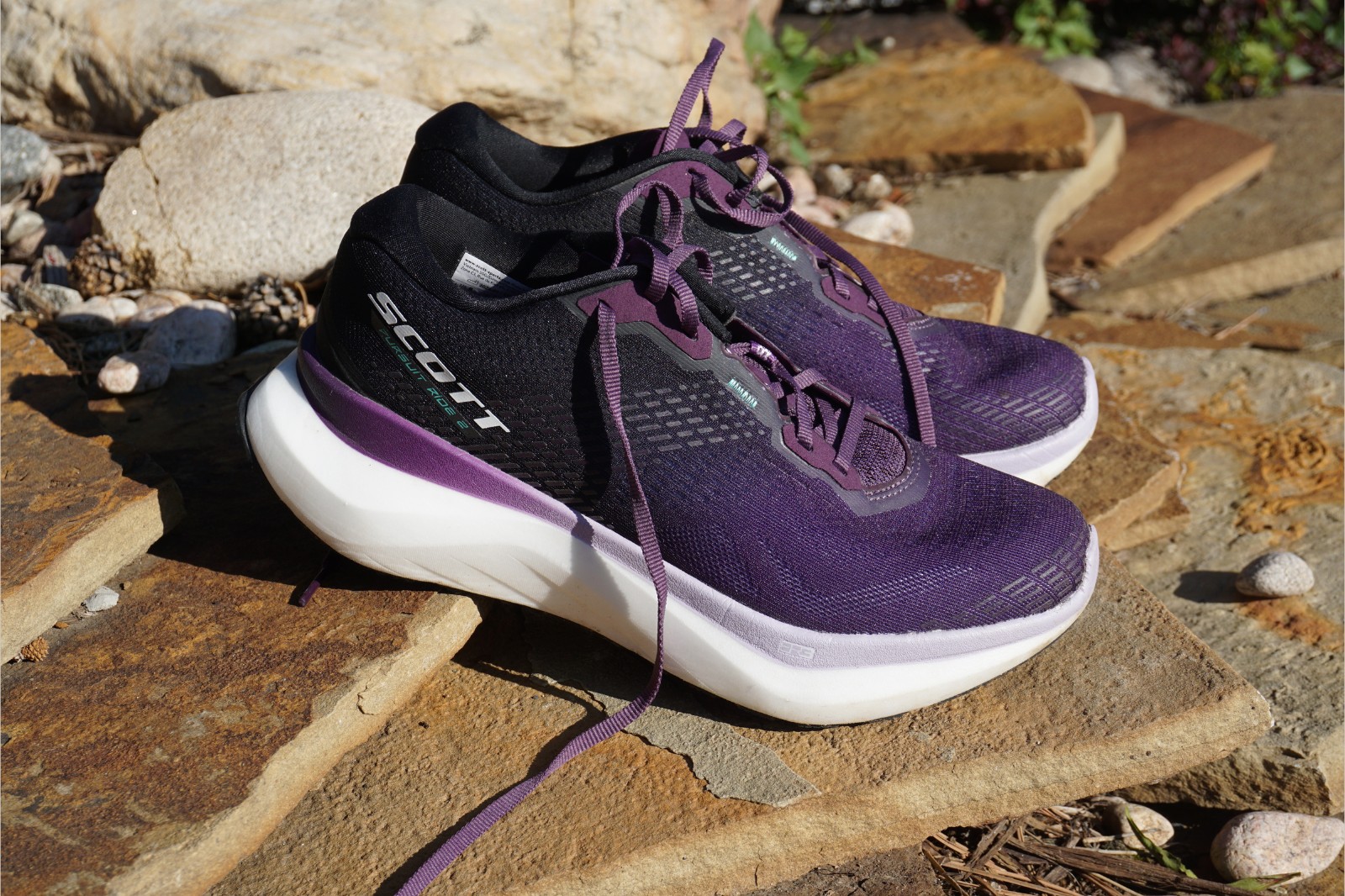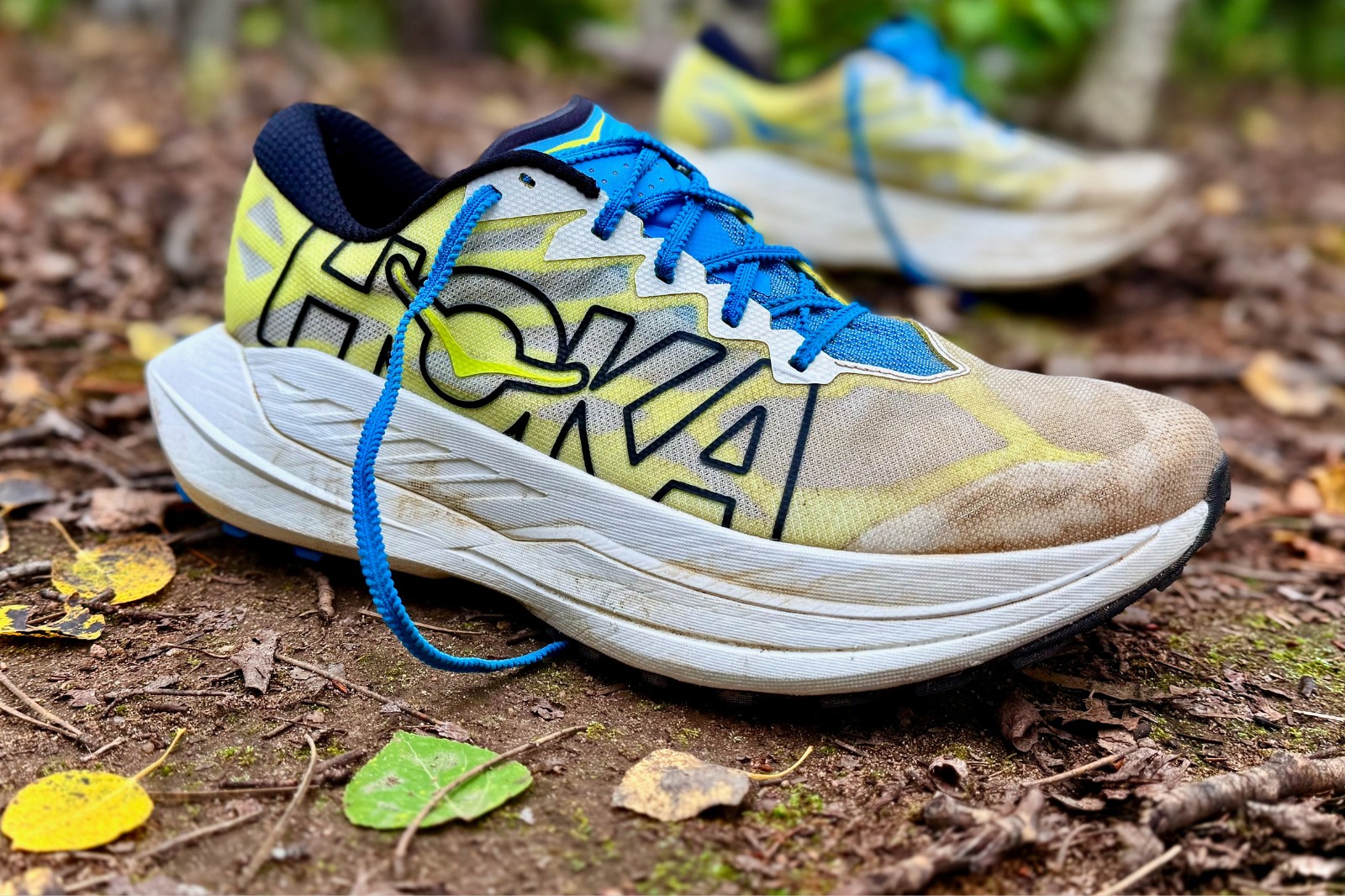
We independently review everything we recommend. When you buy through our links, we may earn a commission.
10 oz. (282 g) for a US M10.5 / 8.1 oz. (230 g) for a US W8
42 mm in heel, 36 mm in forefoot (6 mm drop)
Smooth terrain racing
ATPU based Super Foam, H-shaped Carbon Plate, Engineered Mesh upper, 3.5 mm lugs















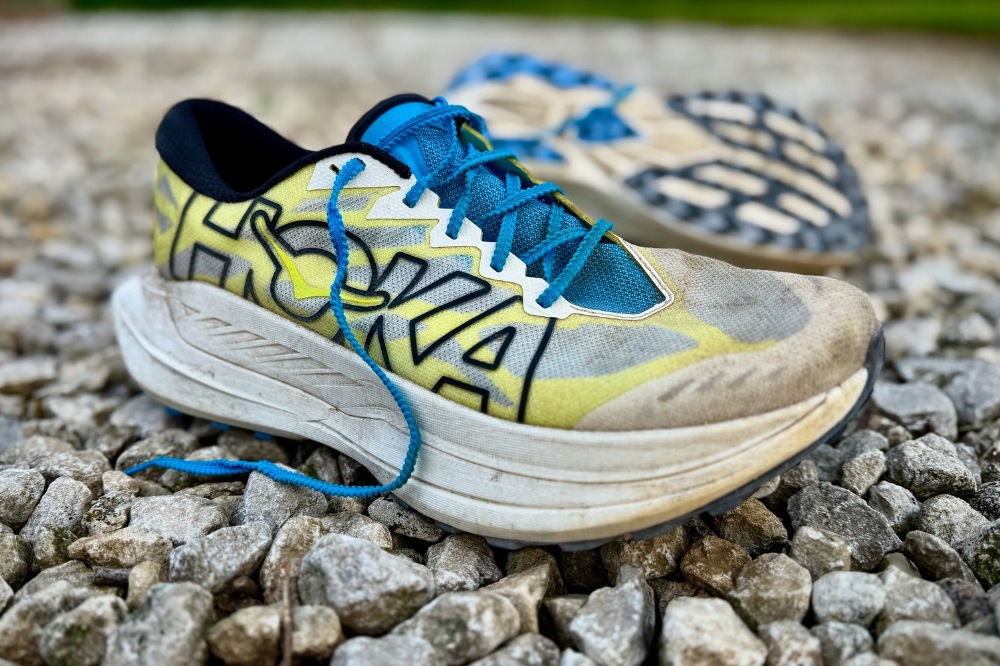
TAYLOR: There’s a constant comparison between road and trail when it comes to performance shoes. While the one completely informed the other initially, this new generation of trail racers has seen its biggest divergence over the last few years.
We’ve mostly seen this in foam and plate technology, where shoes like the original The North Face Flight Vectiv and Hoka Tecton X were the pioneers. While both series continue to push the boundaries in their own respects with their latest models (Summit Vectiv Pro 3 and Tecton X 3), we are now seeing new racers pop up with more specific aims.
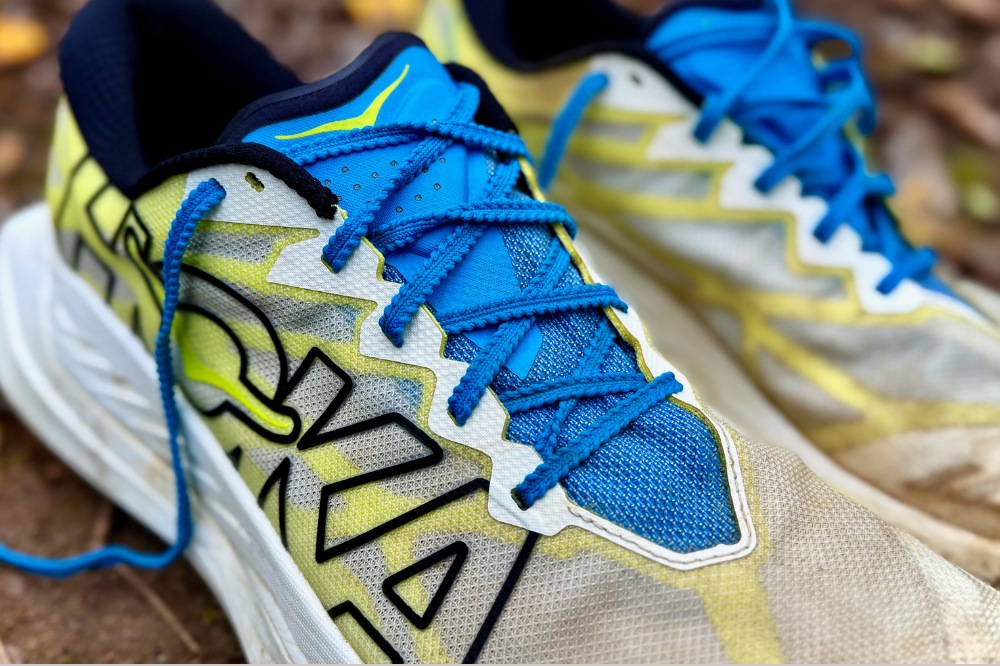
Interestingly enough, Hoka’s newest racer takes a swing back to the days of directly adopting road shoe tech. The Hoka Rocket X Trail is a brand-new racer that lands somewhere between the brand’s marathon race day shoe and popular trail racer.
This design drop might be a little bit confusing because there are many variations of successful plates or rods used specifically for trails already. So, why use the general geometries and materials found in Hoka’s Rocket X series? Well, apparently, the original order of the Hoka Rocket X Trail came directly from Jim Walmsley himself.
He wanted the cushion to go the distance, but the pop to propel him forward that he has enjoyed from the Rocket X. Voila!
Well, the finished product isn’t exactly a one-for-one. While the midsole geometry is the closest comparison, there are a few more specific trail adaptations: a different super foam compound, an H-shaped carbon fiber plate, and a trail-specific upper. Those differences make the Rocket X Trail a spicy shoe designated for smoother terrain.
Shop The Shoe - Men Shop The Shoe - Women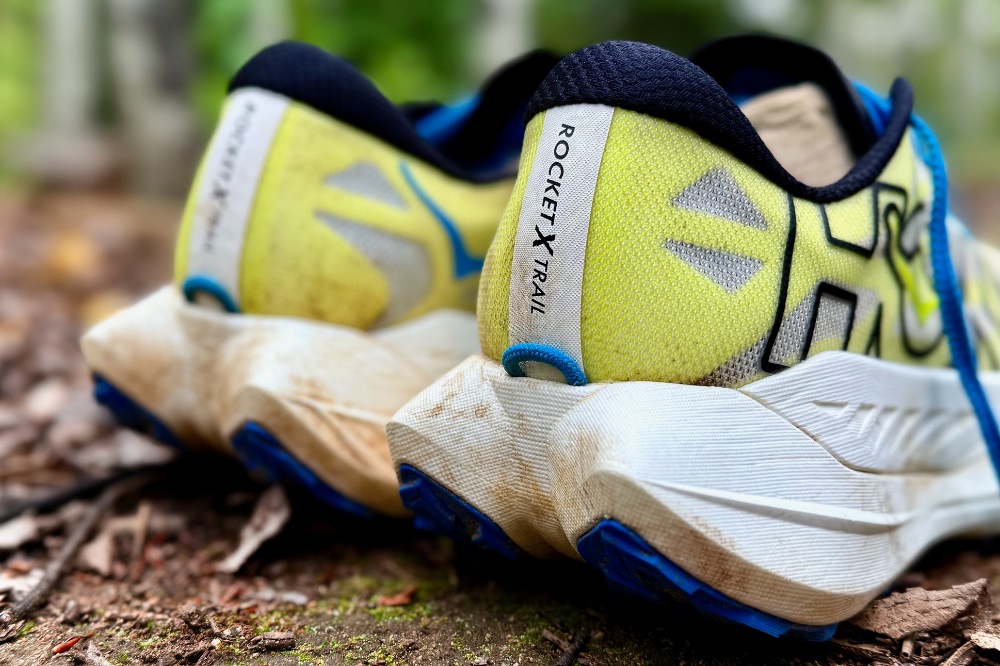
TAYLOR: Efficiency is the name of the game in trail ultrarunning. It’s really not an argument that this is the most important feature of a shoe in this category, and few have created a package centered around this idea. Like with the On Cloudultra Pro (another favorite shoe of the year), I feel efficiency is the most forward sensation with the Rocket X Trail.
There’s a lot that contributes to this, but one of the main reasons is the shaping of the midsole. Draw a line from heel to toe, and you’ll notice a more aggressive rockered heel and a late-stage rockered forefoot — meaning that the tipping point to toe-off comes later in the foot’s transition. Neither is overly aggressive, but because both sides of the shoe have this rocker, a very smooth footstrike and toe-off are ensured.
A broader base also helped with stability and control to assist with this forward, efficient motion.
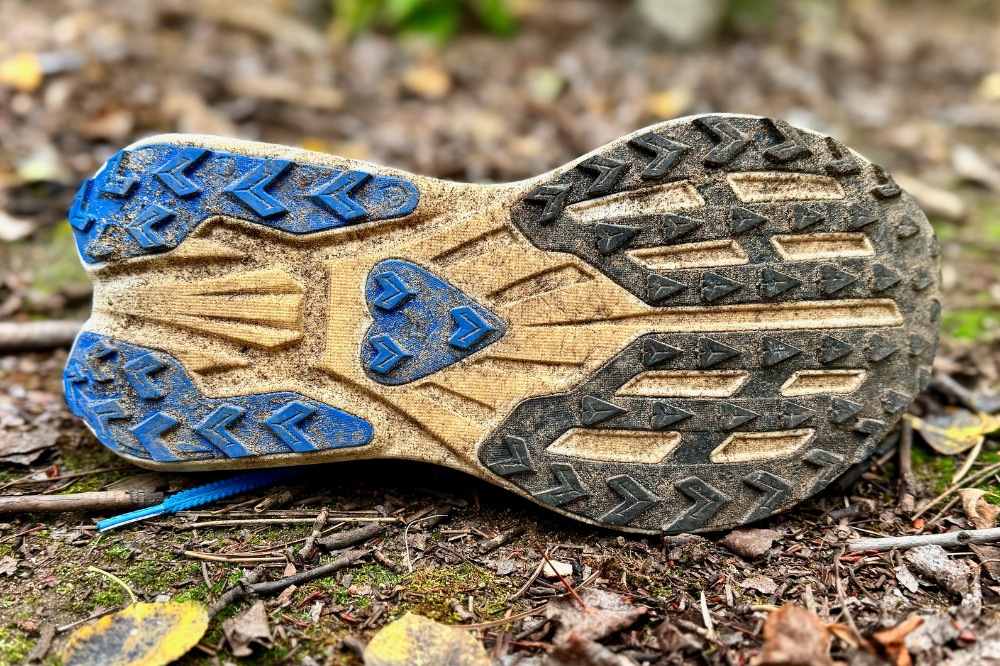
Let’s get to that foam, though. If ATPU is the hot new foam, then the Rocket X Trail is on fire! This shoe has more of it than any other trail shoe on the market. There’s a short list of shoes that utilize this foam. On the roads, we have the Puma Deviate Nitro Elite 3, Speedland RX:FPY, and Tracksmith Eliot Racer. For dirt digging, we really only have the Puma Deviate Nitro Elite Trail and now the Hoka Rocket X Trail.
And, like I said, there’s a lot of it underfoot. Part of the benefit of this supercritical midsole material is that it can offer similar energy and underfoot cushion as PEBA (many race shoes utilize this material), but it is typically much more durable and slightly denser, too. I think all is true in this case, and I enjoyed the underfoot feeling a lot.
The 42/36 mm stack midsole has a medium-soft, spongy, energetic ride that felt as good on the roads as on light trails. In conjunction with the midsole shaping, the H-shaped carbon plate added even more stability and snap, which made for a consistently zippy and surprisingly steady ride. True cushion, energy return, and a subtly snappy toe-off were all apparent. The overall ride makes me think of a blend between the Asics Metafuji Trail and the Hoka Tecton X 3.
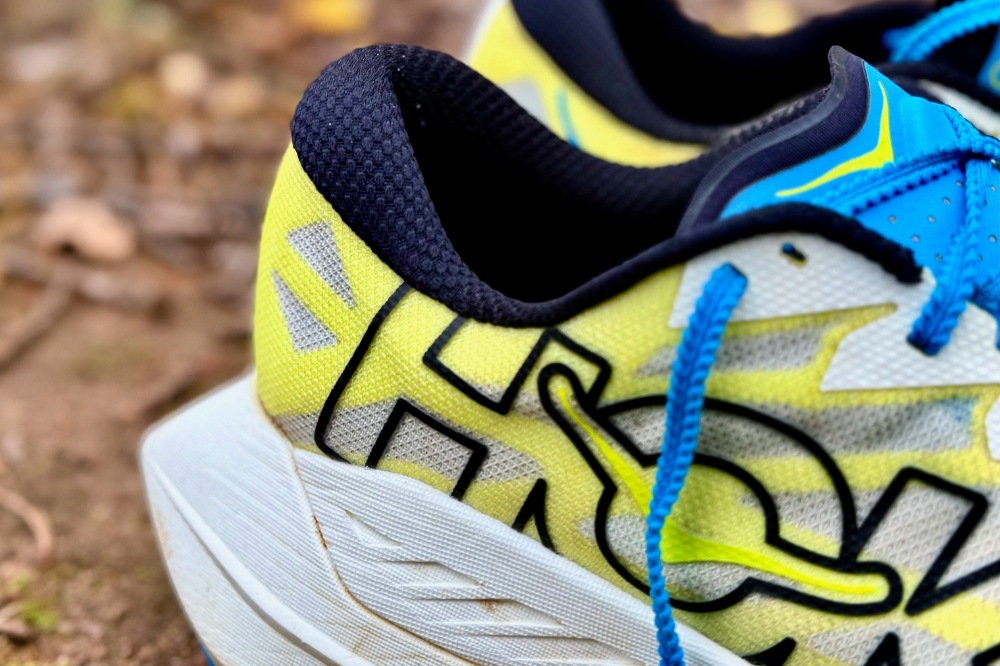
This underfoot goodness could be all for nothing if the fit lacked accountability. Whereas the flimsiness of the Tecton X 3 upper disappointed me, the structure in the Rocket X Trail excites me the most. It has a similar padded and stout heel construction to the Hoka Mafate X, which helped anchor the foot appropriately over top of the reactive ride—comfortable and functional.
A technical engineered mesh with a webbed cage of innerlays continued the structure up top without going overboard. Again, I really liked how this made my foot feel secure enough to run confidently, even on moderately technical terrain. This lightweight and durable option is hard not to compare to the Matryx upper found on the Hoka Tecton X 2.
Many runners will appreciate that while the midfoot and heel were “fitted” but not tight, the forefoot felt slightly accommodating for the long haul. Even though there were minor fit issues (refer to the next section), I was quite comfortable on runs that pushed a half-day or further.
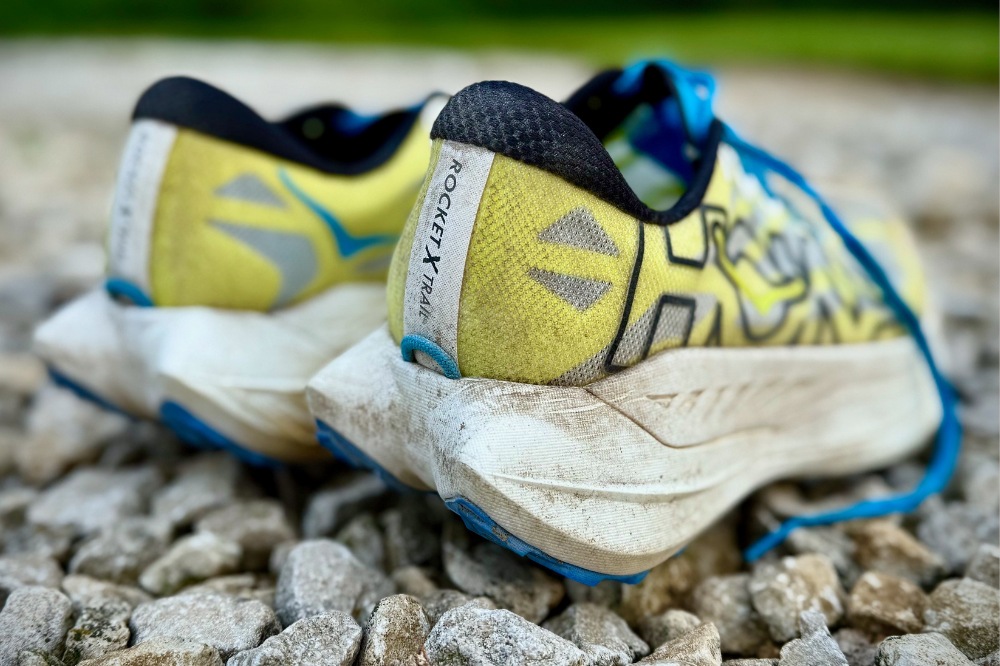
I’ll mention this again, but I really believe that the upper construction and fit allow the Hoka Rocket X Trail to be more versatile than even Hoka gives it credit for.
Lastly, that outsole has a similarly versatile construction as many race-day options. The 3.5 mm lugs in the forefoot and heel felt great on anything from pavement to light trails. The rubber is surprisingly tacky and performed well on wet trails that weren’t soupy. Even though this outsole pattern has its known limitations, I appreciate the versatility, flexibility, and lightweight construction.
Since I have already made the comparison between road and trail super shoes, I think it’s important to note that while many road racers are built only to last a limited time, the Hoka Rocket X Trail has only shown signs of lasting longer. Even the foam, after 50-plus miles, has great character and shows no signs of slowing down. I’d dare to say that this shoe will last longer than many of its competitors (with the exception of the outsole), even the Hoka Tecton X 3.
Shop The Shoe - Men Shop The Shoe - Women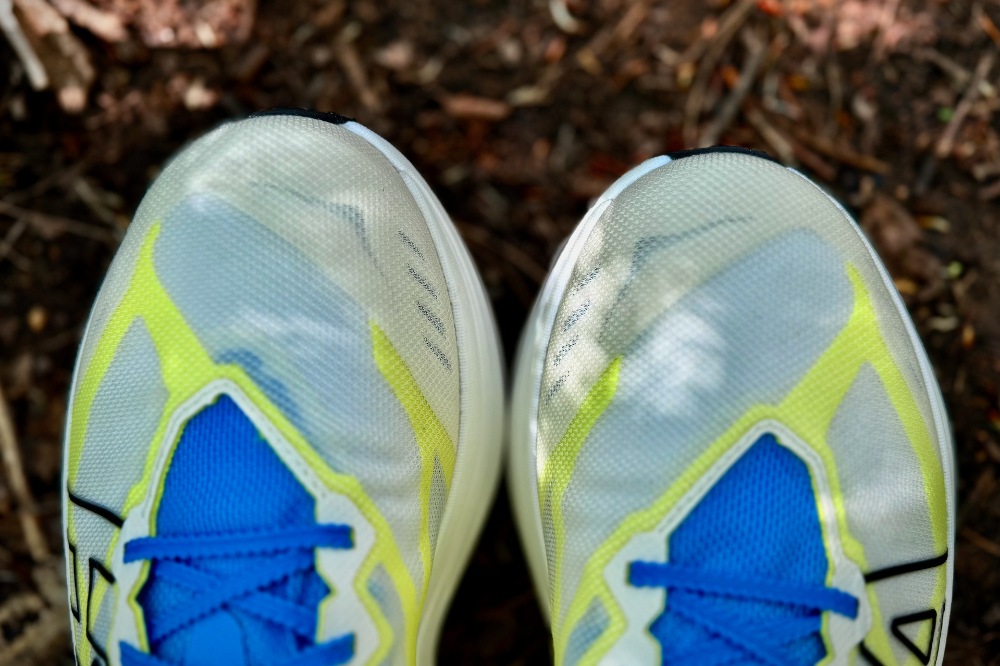
TAYLOR: Durability is a chief concern of race-day shoes. As mentioned, I do believe the Hoka Rocket X Trail will last surprisingly long. My only real doubt is the outsole. The lugs around my toes have already been eaten up, and the rest of the forefoot lugs are showing some signs of degradation.
While the shorter Vibram Megagrip Litebase outsole on the original Tecton X and Tecton X 2 wasn’t perfect, it did its job really well. The durability alone makes me wonder why they didn’t stick with that ingredient.
Other than that, fit nuances are my only other worry.
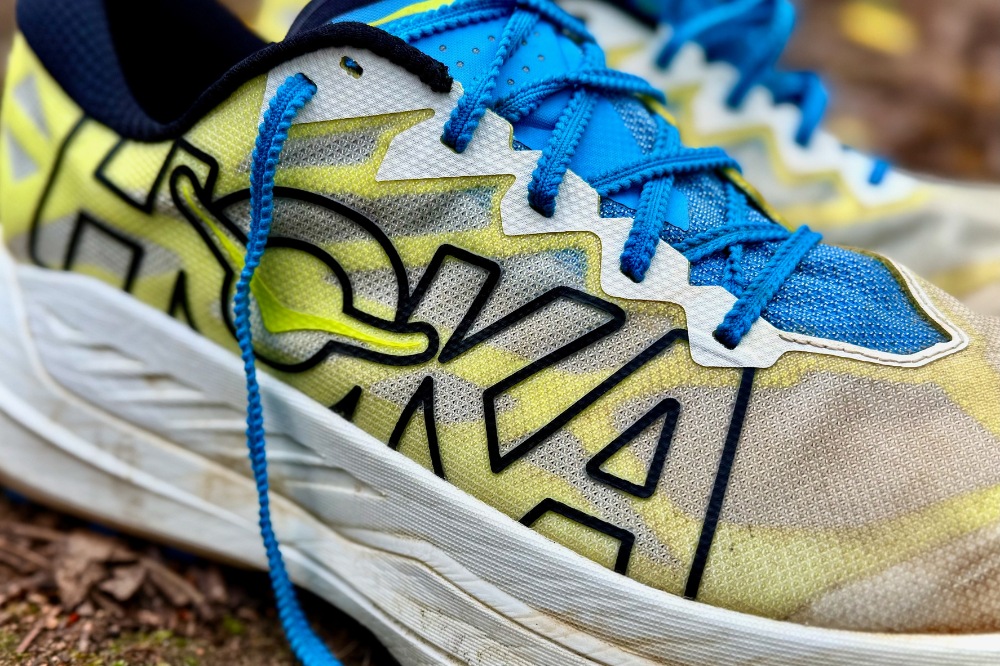
As mentioned, the toe box is slightly accommodating in terms of width. It did feel “stumpy” to me, though. Depending on preference for long-distance racing, I would recommend going up at least a half size from your typical, maybe even a full size.
Also, even though the spec sheet includes a Dynamic Vamp, I felt there wasn’t any play with the fit. This is a feature I have come to love with Hoka’s offerings like the Mafate 5, Mafate X, and even the Speedgoat 6. The technical mesh upper will not stretch like a traditional mesh, and the vamp wasn’t actually elastic either. So, the fit will be a get-what-you-get scenario out of the box. This isn’t entirely bad; it’s just something to note.
The tongue is made of a similar but slightly more flexible material as the upper. It was so flimsy that it bunched up quite a bit every time I tied my shoes. I didn’t experience any discomfort because of it, but it is definitely a prime scenario for something to pop up over time, whether that’s topical irritation or odd pressures on the foot.
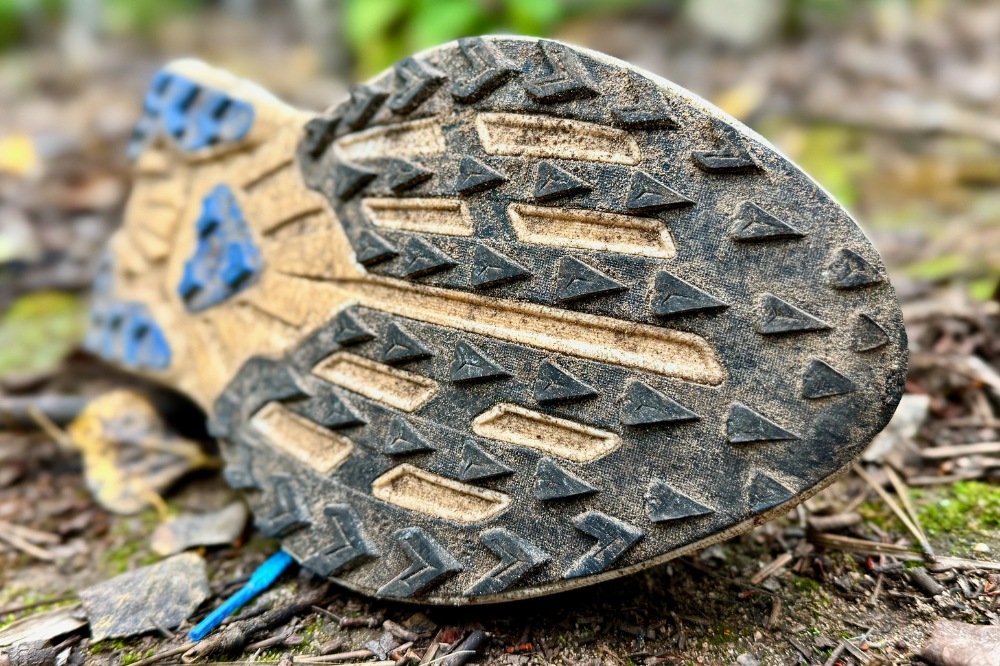
TAYLOR: Am I happy? In a general sense, very.
I was a little surprised by the Hoka Rocket X Trail’s efficiency-over-anything sensation; however, the more I ran, the more I learned to love it. Don’t get me wrong, it still has an energetic and fairly snappy feel. With a name like Rocket X Trail, I simply expected that blast-off sensation. My perception of that comes directly from spending a little bit of time in road racing options like the Hoka Cielo X1 2.0.
Hoka’s Rocket X Trail is made for the smoother, faster segments of trail running. While it is a great offering for doing just that, I really believe Hoka is underselling by simply tagging it in the “gravel” category. I’m glad to say that the overall fit and underfoot function make this an amusing shoe to wear for a variety of trail running.
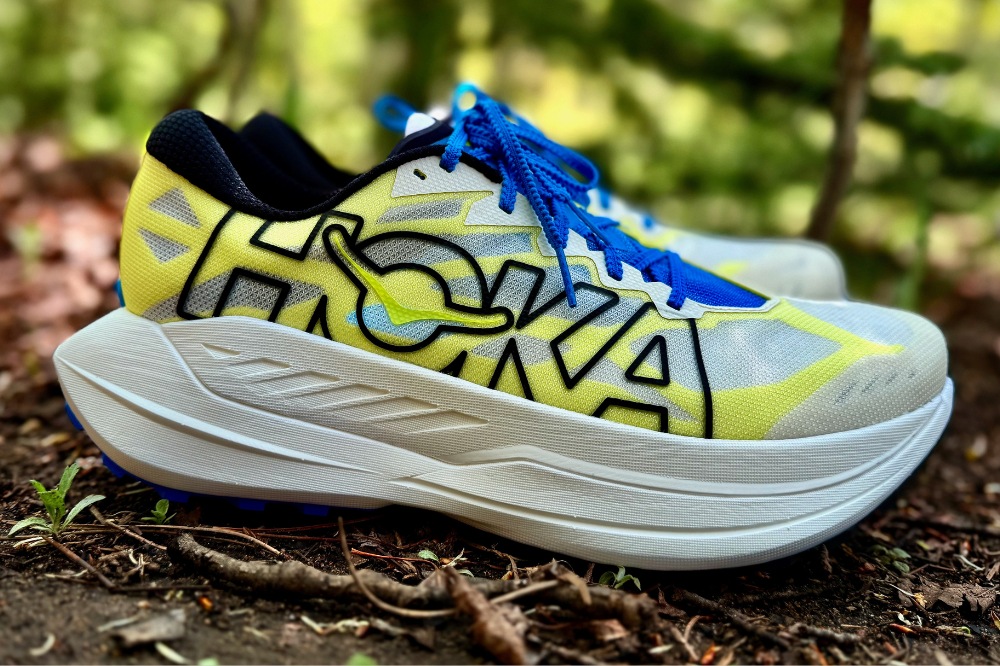
As with any $250 shoe, I’m happy to report that besides outsole durability and slight fit nuances, there’s not much that should deter a runner from trying out the Hoka Rocket X Trail.
You can pick up the Hoka Rocket X Trail for $250 from Running Warehouse (featuring free shipping and 90-day returns) by using the buttons below.
Shop The Shoe - Men Shop The Shoe - WomenHave something to say? Leave a Comment

Taylor Bodin is a trail and ultra runner living in Estes Park, Colo., with his wife and daughters. As the head of the Dirt Division at Believe in the Run, trail running is pretty much the only hobby he can manage right now and loves it. Every so often, he will pop off a race or FKT attempt because competition is pure and the original motivator for him getting into running anyway.
More from Taylor